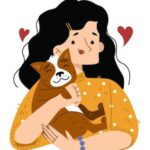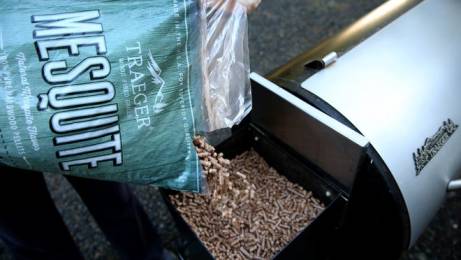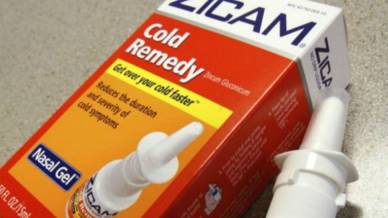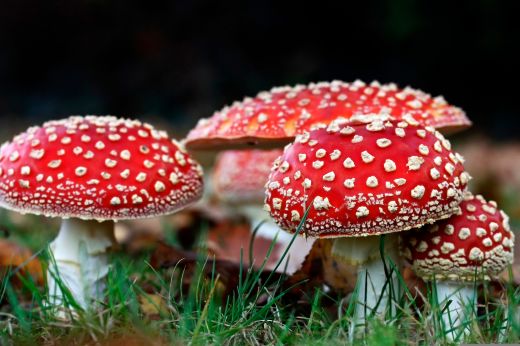Ugh, has your dog been at the kitty’s litter box again? Has he eaten some Breeze pellets? Then you’ve come to the right place.
Connect with a verified veterinarian in minutes. Licensed vets are available 24/7 to answer your questions. No need to worry about your furry family member.
We’ve put together some information about Breeze pellets and what you need to do if your dog has eaten some of them. Let’s get started!
What are Breeze Pellets?
Breeze pellets are put out by Tidy Cats (by Purina) and are part of a cat litter system that makes it easier to keep odors down and clean the litter box at the same time. The Breeze system includes a litter box, pads for the feet (non-tracking of cat litter), as well as pellets for inside the litter box.
The litter pellets are available in unscented, Fresh Scent, and Active Clean scent. They’re also made to be anti-tracking in order to keep the mess around the litter box to a minimum. The pellets are 99.9% dust-free and only need to be changed out once a month.
The pellets are made of Zeolite, which is a type of microporous, aluminosilicate mineral that’s used as an absorbent or a catalyst. The FDA has said this mineral is 100% safe and non-toxic; however, it should not be ingested. Zeolite pellets are not digestible.
Breeze Pellets & Dogs
If your dog has eaten Breeze pellets, then it’s a good idea to call the vet. The pellets are not digestible. This means they will sit in your dog’s digestive tract, which could cause a major problem such as intestinal obstruction, peritonitis (inflammation of the stomach lining), loss of blood circulation to the stomach or parts of the intestine, and more.

Review symptoms, medications & behavior to keep your pets healthy with a Vet Online in just minutes.
Ask a Vet Live NowSymptoms of Breeze Pellets in Dogs
You may notice these symptoms if your dog has eaten Breeze pellets:
- Vomiting
- Lack of appetite
- Diarrhea
- Rapid breathing
- Weakness
- Constipation
- Black stools
- Unwilling to lie down
- Abdominal pain/swelling
- Fever
- Shock
- Low blood pressure
- Pale gums
- Rapid heart rate
If you notice these symptoms in your dog, then call the vet immediately. This is a medical emergency.
Treatment of Ingestion of Breeze Pellets in Dogs
Treatment will depend on the diagnosis. For either peritonitis or an intestinal blockage, the vet may need to perform surgery. The goal of treatment after this will be to stabilize the dog and treat any other symptoms that may arise. This may include IV fluids, electrolytes, and antibiotics. And if your dog has peritonitis, he won’t be able to eat for a few days. Instead, he’ll need to have a feeding tube through his nose for a few days.
Both of these conditions are serious; however, with prompt medical care, most dogs will go on to make a full recovery.
Keep Dogs Out of the Litter Box
Some dogs seem compulsive about eating cat litter! They love the “snacks” the kitty leaves for them! While cat litter is non-toxic (in most cases), it can cause your canine fur baby to become sick if he eats too much. So, how can you keep your dog out of the kitty’s litter?
Here are some tips you can try to keep your dog out of the cat’s box!
Use a baby gate: keeping the cat’s litter box in another room is one way to keep your dog from eating Breeze pellets. First, put the litter box in another room, then put the baby gate up. Be sure the gate isn’t too high; otherwise, your dog will do the Limbo and go under the gate! The gate should be high enough to keep your canine fur baby out but allow easy access for your kitty.
Install a cat door: this may seem like an extreme tip, but if your dog has eaten cat litter and gotten sick, you want to avoid more vet bills! You can put the cat door in a bathroom or closet door. Another possibility is to install the cat door in the basement door. The door should be large enough for your cat to comfortably go through but small enough to keep your dog out.
Place the litter box on a countertop or laundry table: this suggestion may also seem extreme, but it’s a great way to keep your dog out of the cat’s litter box. The key is to ensure your kitty can get to the box easily, but it should be high enough to keep your dog from gaining access.
Keep the litter box clean: daily cleaning by removing soiled litter may get rid of your dog’s drive for snacks in the litter box. If the litter box doesn’t smell like “food” to your dog, he may leave it alone.
You may need to try a combination of these tips to keep more determined dogs out of the cat’s litter box!
Connect with a verified veterinarian in minutes. Licensed vets are available 24/7 to answer your questions. No need to worry about your furry family member.

Kyoko
Kyoko is from a family of 3 and moved to New York with her parents and siblings when she was 13. Kyoko is fond of spending a great amount of time with pets, specifically her beagle Luna and cat Missy. Her boyfriend often complains that she spends too much time giving attention to their animals. Kyoko has written dozens of articles concerning pets and is aiming at owning a pet shop one day!
Review symptoms, medications & behavior to keep your pets healthy with a Vet Online in just minutes.
Ask a Vet Live Now




